
Imaging Science in Dentistry
Scope & Guideline
Leading the way in open-access dental imaging research.
Introduction
Aims and Scopes
- Cone-Beam Computed Tomography (CBCT) Applications:
The journal extensively covers the use of CBCT in various dental scenarios, including implantology, orthodontics, and pathology, emphasizing its role in improving diagnostic precision and treatment planning. - Artificial Intelligence and Machine Learning:
There is a growing emphasis on the integration of AI and machine learning techniques in dental imaging, particularly for automated diagnosis, segmentation, and image enhancement. - Interdisciplinary Imaging Approaches:
The journal promotes interdisciplinary studies that combine imaging techniques with clinical practices, thereby enhancing the understanding of complex dental conditions. - Impact of Imaging on Clinical Outcomes:
Research published in the journal often focuses on the correlation between imaging findings and clinical outcomes, highlighting the importance of accurate imaging in treatment success. - Innovative Imaging Techniques:
The journal explores novel imaging methods, such as magnetic resonance imaging and ultrasonography, and their applications in dentistry, aiming to advance the field through innovative practices.
Trending and Emerging
- Metal Artifact Reduction Techniques:
With the increasing use of dental implants, research focusing on metal artifact reduction in imaging has gained momentum, addressing challenges in accurate diagnostics related to metal interference. - AI in Radiographic Analysis:
The application of AI for enhancing the accuracy of radiographic analysis, including automated detection and classification of dental conditions, is emerging as a significant trend. - 3D Imaging and Visualization:
There is a growing interest in 3D imaging techniques and their applications in treatment planning, surgical guides, and patient-specific modeling, reflecting a shift towards more personalized dental care. - Interdisciplinary and Collaborative Research:
The journal is increasingly publishing studies that involve collaboration between various dental specialties and imaging disciplines, indicating a trend towards comprehensive patient care. - Impact of Imaging on Patient Management:
Research examining the direct impact of imaging findings on patient management and treatment outcomes is trending, underlining the importance of imaging in clinical decision-making.
Declining or Waning
- Traditional Radiographic Techniques:
There is a noticeable decrease in studies focusing exclusively on traditional radiography, as newer imaging technologies like CBCT gain more attention and relevance in clinical practice. - Invasive Imaging Procedures:
Research on invasive imaging techniques has diminished, likely due to the increased emphasis on non-invasive methods that provide comparable diagnostic value without patient discomfort. - General Dental Practices:
There is a waning focus on general dental practices in imaging studies, with more specialized topics gaining traction, reflecting a shift towards niche areas of research. - Historical Reviews of Imaging Techniques:
The interest in historical reviews or analyses of past imaging techniques has declined, as the journal prioritizes cutting-edge research and advancements in the field. - Basic Anatomy Imaging Studies:
Studies focusing solely on basic anatomical imaging have seen a decrease, as the journal leans towards more complex and clinically relevant imaging investigations.
Similar Journals

JACC-Cardiovascular Imaging
Driving Excellence in Cardiovascular Imaging StudiesJACC-Cardiovascular Imaging, published by Elsevier Science Inc, is a premier journal that focuses on the rapidly evolving field of cardiovascular imaging, providing a vital platform for the dissemination of high-quality research and clinical studies. With an impressive impact factor and ranking within the top tier of cardiology and radiology specialties, the journal is recognized for its commitment to advancing knowledge in diagnostic imaging techniques, including echocardiography, MRI, and CT in cardiovascular contexts. Since its inception in 2008 and converging through 2024, JACC-Cardiovascular Imaging has maintained a distinguished position, currently ranking Q1 both in Cardiology and Cardiovascular Medicine as well as in Radiology, Nuclear Medicine and Imaging. This ensures its relevance and influence, as evidenced by its Scopus rankings—ranked #2 in Radiology and #8 in Cardiology, placing it in the top echelons of scholarly output. Although it does not offer open access, the journal's content is crucial for researchers, clinicians, and students who seek to remain at the forefront of cardiovascular imaging advancements.

Imaging
Advancing the Frontiers of Medical ImagingImaging, published by AKADEMIAI KIADO ZRT, is an esteemed open-access journal dedicated to the field of medical imaging, established in 2020. With an E-ISSN of 2732-0960 and based in Budapest, Hungary, this journal provides a vital platform for the dissemination of cutting-edge research and advancements in imaging techniques, especially in the realms of radiology, nuclear medicine, and ultrasound technology. While currently positioned in the Q4 category across multiple medical specialties, the journal continues to strive for improvements in visibility and impact, contributing to the evolving discourse in medical imaging. The journal aims to facilitate an inclusive and collaborative environment for researchers, professionals, and students, inviting them to share their findings and insights to enhance the field's development. With open-access availability since its inception, Imaging ensures free and easy access to its content, fostering a greater understanding and appreciation of innovative imaging practices worldwide.

INTERNATIONAL JOURNAL OF CARDIOVASCULAR IMAGING
Bridging Disciplines for Enhanced Heart CareINTERNATIONAL JOURNAL OF CARDIOVASCULAR IMAGING, published by Springer, is a prestigious platform dedicated to the interdisciplinary field of cardiovascular medicine and imaging. With an ISSN of 1569-5794 and E-ISSN 1875-8312, the journal is recognized in both Cardiology and Cardiovascular Medicine (Rank #154/387, Q2 Category) and Radiology, Nuclear Medicine and Imaging (Rank #137/333, Q2 Category) disciplines, reflecting its significant impact within the scientific community. Established in 1988 and continuing to the present, it provides a rigorous forum for cutting-edge research, reviews, and clinical insights that are essential for advancing knowledge in cardiovascular diagnostics and therapeutic imaging. The journal's dual access options cater to both traditional and open-access readership, ensuring wide dissemination of its findings. In an era where cardiovascular diseases pose a significant public health challenge, the INTERNATIONAL JOURNAL OF CARDIOVASCULAR IMAGING stands out as an essential resource for researchers, healthcare professionals, and scholars aiming to innovate and improve patient outcomes through imaging technology.

JOURNAL OF CARDIOVASCULAR MAGNETIC RESONANCE
Transforming patient care with pioneering studies in cardiovascular magnetic resonance.JOURNAL OF CARDIOVASCULAR MAGNETIC RESONANCE (ISSN: 1097-6647, E-ISSN: 1532-429X) is a premier open access journal published by Elsevier Science Inc in the United Kingdom, dedicated to advancing the field of cardiovascular imaging through magnetic resonance technology. Since its inception in 1999, the journal has established a robust reputation, evidenced by its ranking in the Q1 category across various fields including Cardiology and Cardiovascular Medicine, Family Practice, and Radiology, Nuclear Medicine and Imaging, as reported in its 2023 assessments. With a strong emphasis on high-quality research and innovations, this journal serves as a vital resource for researchers, clinicians, and students alike, providing vital insights that influence clinical practice and enhance patient care. Its rigorous peer-review process ensures that all contributing authors publish influential studies that are widely disseminated within the academic community. Researchers can access the journal freely since it has been an open access platform since 2008, promoting a wider reach and engagement within the cardiovascular imaging arena.

DENTOMAXILLOFACIAL RADIOLOGY
Illuminating the Path to Advanced Dental DiagnosisDentomaxillofacial Radiology, published by the British Institute of Radiology, serves as a premier journal in the realm of radiology, focusing specifically on imaging techniques and methodologies that are essential for the diagnosis and treatment in the dental and maxillofacial regions. Since its inception in 1972, the journal has maintained a rigorous standard for publishing impactful research, currently boasting an impressive impact factor that underscores its relevance and authority in the field. With categorization in Q1 for both Dentistry (Miscellaneous) and Otorhinolaryngology, as well as Q2 for Medicine (Miscellaneous), this journal supports professionals and students alike through the dissemination of cutting-edge research. Although it does not currently operate as an open-access platform, it is accessible for a wide audience eager to engage with the latest advancements in radiology, nuclear medicine, and imaging. By bridging the gap between clinical practice and innovative research, Dentomaxillofacial Radiology continues to be an invaluable resource for academics and practitioners seeking to enhance their expertise and improve patient outcomes in a rapidly evolving field.
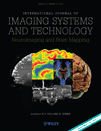
INTERNATIONAL JOURNAL OF IMAGING SYSTEMS AND TECHNOLOGY
Advancing Imaging Knowledge for Tomorrow's InnovationsINTERNATIONAL JOURNAL OF IMAGING SYSTEMS AND TECHNOLOGY, published by Wiley, is a leading journal dedicated to advancing the field of imaging systems and technologies. With an ISSN of 0899-9457 and E-ISSN 1098-1098, this esteemed journal offers a platform for high-quality research spanning essential interdisciplinary areas, including Biomedical Engineering, Computer Science, and Health Informatics. Recognized for its impactful contributions, it holds a commendable position in the Q2 quartile across multiple categories as of 2023. The journal boasts an excellent Scopus ranking, with notable acknowledgments like rank #49 out of 333 in Radiology, Nuclear Medicine, and Imaging, showcasing its relevance and importance in the academic community. Publishes annually from 1989 to 2024, it aims to bridge gaps in knowledge and foster innovative developments through rigorous peer-reviewed articles. Though it operates under a traditional access model, the journal maintains an accessible repository of cutting-edge research, making it indispensable for researchers, professionals, and students alike seeking to stay at the forefront of imaging technology advancements.
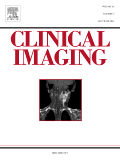
Clinical Imaging
Shaping Tomorrow's Imaging Techniques TodayClinical Imaging, published by Elsevier Science Inc, is a renowned journal dedicated to the field of radiology, nuclear medicine, and imaging. With an ISSN of 0899-7071 and an E-ISSN of 1873-4499, this esteemed publication has established its significance in advancing imaging science since its inception in 1989 and continues to make impactful contributions to the discipline through 2024. The journal holds a prestigious Q2 ranking in the category of Radiology, Nuclear Medicine, and Imaging, reflecting its critical role in bridging research and clinical practice. Currently ranked #113 out of 333 by Scopus, with a notable 66th percentile, it offers a platform for disseminating high-quality research, reviews, and case studies that inspire innovation and enhance imaging techniques. Although it primarily functions as a subscription-based journal, it remains dedicated to accessibility and the dissemination of pivotal findings that inform both academia and clinical settings. Clinical Imaging is essential for researchers, professionals, and students alike, offering insights that shape the future of diagnostic imaging.
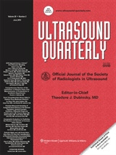
Ultrasound Quarterly
Connecting Professionals Through Cutting-Edge Research.Ultrasound Quarterly is a leading journal published by Lippincott Williams & Wilkins, dedicated to advancing knowledge and practice in the fields of radiology, nuclear medicine, and imaging. Established in 1988, the journal has served as a vital platform for researchers, clinicians, and students seeking to stay abreast of the latest advancements and techniques in ultrasound technology. With an impact factor that reflects its significance in the field—ranking in the Q3 category within its specialty based on the 2023 metrics—this journal reaches a global audience, facilitating knowledge dissemination and fostering innovation. Ultrasound Quarterly publishes original research, reviews, and clinical studies, making it an essential resource for professionals committed to enhancing patient care through effective imaging practices. To explore its comprehensive articles, visit the journal's website for easy access to the latest research findings.
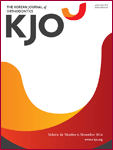
Korean Journal of Orthodontics
Advancing Orthodontics through Innovative ResearchThe Korean Journal of Orthodontics is a leading scholarly publication dedicated to the field of orthodontics, published by the Korean Association of Orthodontists. With an impressive ranking of Q1 in Orthodontics as of 2023, the journal is recognized for its significant contributions to the advancement of orthodontic research and practice. Spanning from 2008 to 2024, it offers a rich repository of peer-reviewed articles that cover a wide range of topics, including innovative treatment techniques, clinical practices, and advancements in orthodontic technology. Although it does not currently offer Open Access, the journal remains highly influential, reflected by its Scopus ranking as 9th out of 39 in the Dentistry Orthodontics category, placing it in the 78th percentile. By fostering the dissemination of high-quality research, the Korean Journal of Orthodontics serves as an essential resource for researchers, practitioners, and students in the orthodontic community and is poised to play a significant role in shaping the future of orthodontic treatment in South Korea and beyond.
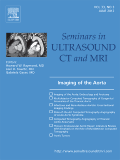
SEMINARS IN ULTRASOUND CT AND MRI
Connecting Clinicians with Cutting-edge Imaging ResearchSEMINARS IN ULTRASOUND CT AND MRI is a prestigious academic journal dedicated to advancing the fields of radiology, nuclear medicine, and imaging. Published by W B SAUNDERS CO-ELSEVIER INC, this journal has been a cornerstone of scholarly communication since 1984, providing a platform for high-quality research and review articles that enhance the understanding of diagnostic imaging techniques. With a current impact factor reflected in its Q3 quartile ranking among 333 journals in its category, it remains a valuable resource for researchers and clinicians alike. The journal's focus includes but is not limited to innovations in ultrasound, computed tomography, and magnetic resonance imaging, making it essential for professionals looking to stay at the forefront of imaging science. While it operates under a subscription model, its extensive archive of influential articles ensures ongoing access to critical knowledge and developments in the field. With a commitment to quality and relevance, SEMINARS IN ULTRASOUND CT AND MRI continues to contribute significantly to the evolving landscape of medical imaging.